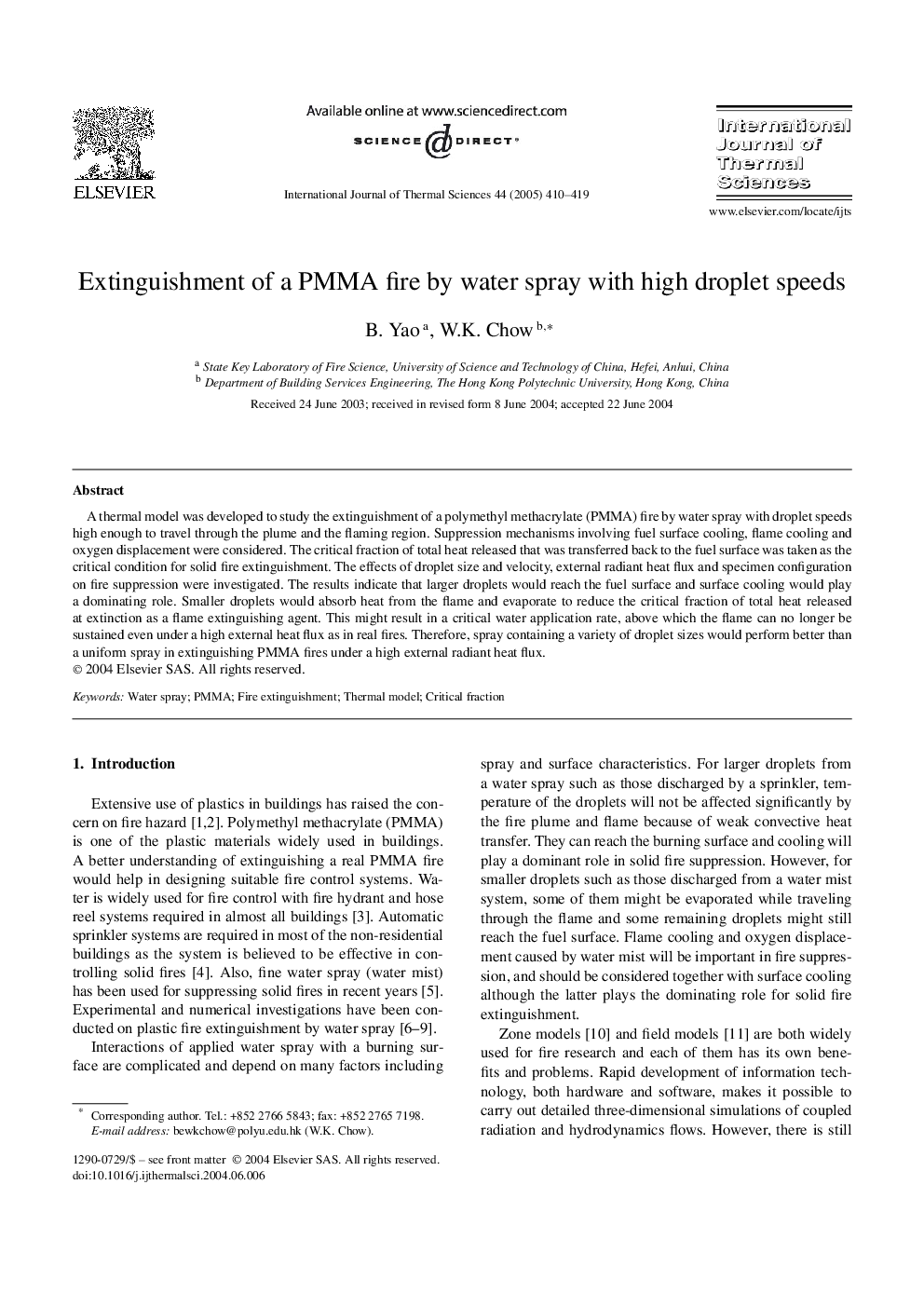| Article ID | Journal | Published Year | Pages | File Type |
|---|---|---|---|---|
| 9692897 | International Journal of Thermal Sciences | 2005 | 10 Pages |
Abstract
A thermal model was developed to study the extinguishment of a polymethyl methacrylate (PMMA) fire by water spray with droplet speeds high enough to travel through the plume and the flaming region. Suppression mechanisms involving fuel surface cooling, flame cooling and oxygen displacement were considered. The critical fraction of total heat released that was transferred back to the fuel surface was taken as the critical condition for solid fire extinguishment. The effects of droplet size and velocity, external radiant heat flux and specimen configuration on fire suppression were investigated. The results indicate that larger droplets would reach the fuel surface and surface cooling would play a dominating role. Smaller droplets would absorb heat from the flame and evaporate to reduce the critical fraction of total heat released at extinction as a flame extinguishing agent. This might result in a critical water application rate, above which the flame can no longer be sustained even under a high external heat flux as in real fires. Therefore, spray containing a variety of droplet sizes would perform better than a uniform spray in extinguishing PMMA fires under a high external radiant heat flux.
Related Topics
Physical Sciences and Engineering
Chemical Engineering
Fluid Flow and Transfer Processes
Authors
B. Yao, W.K. Chow,
